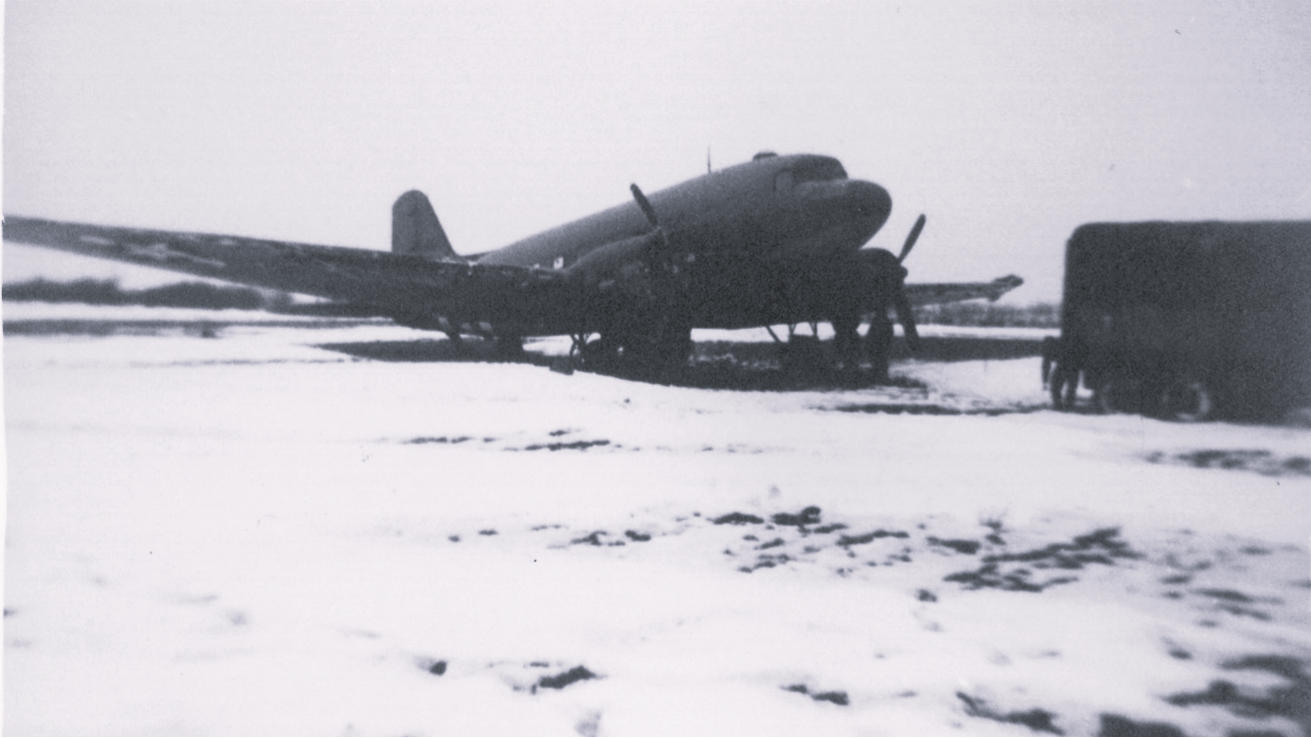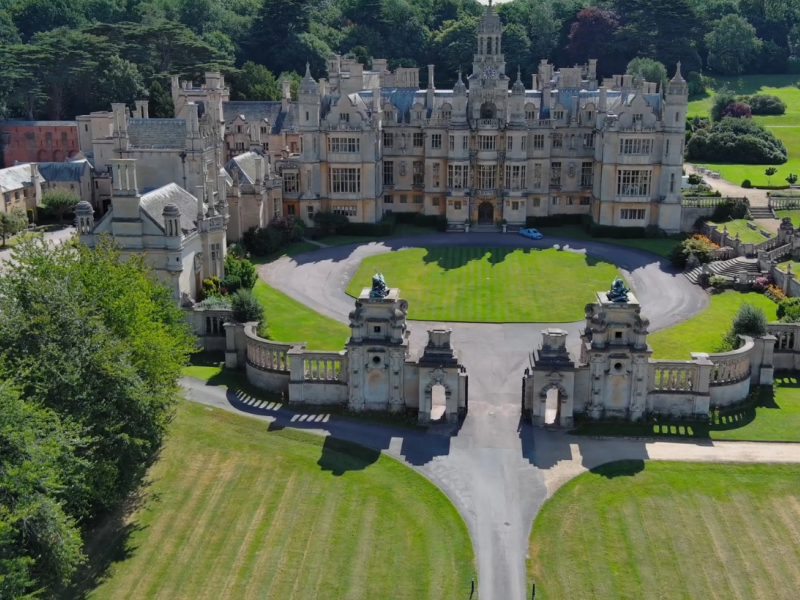The Day a C-47 crash-landed at Harlaxton airfield
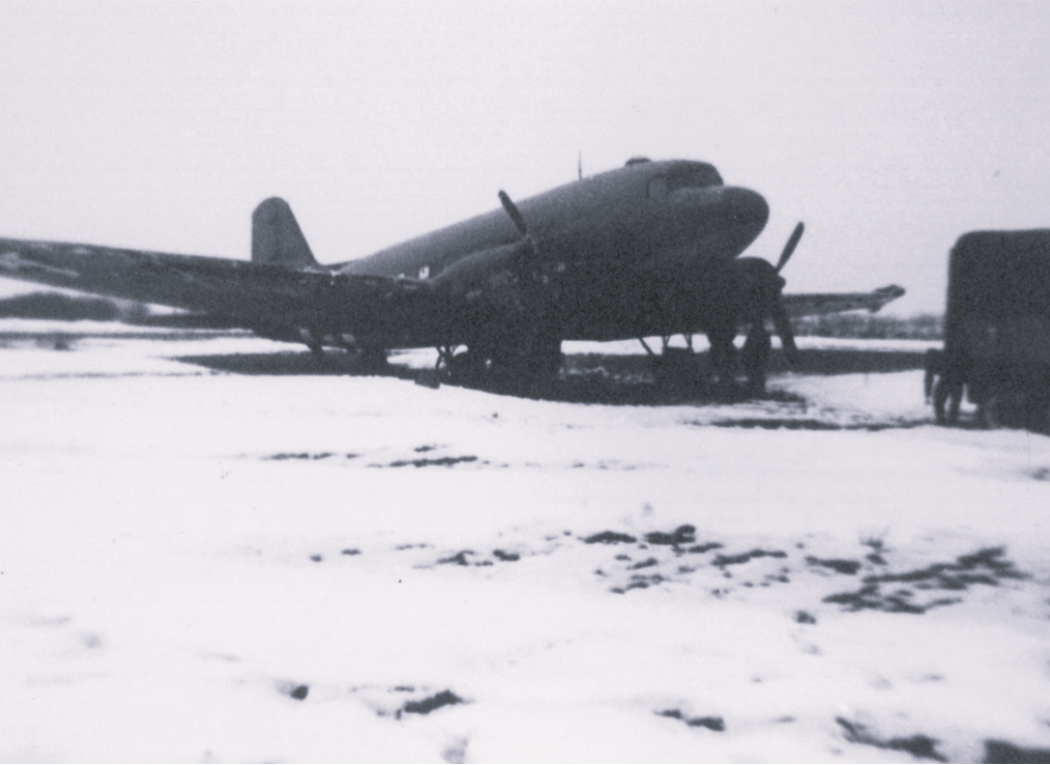
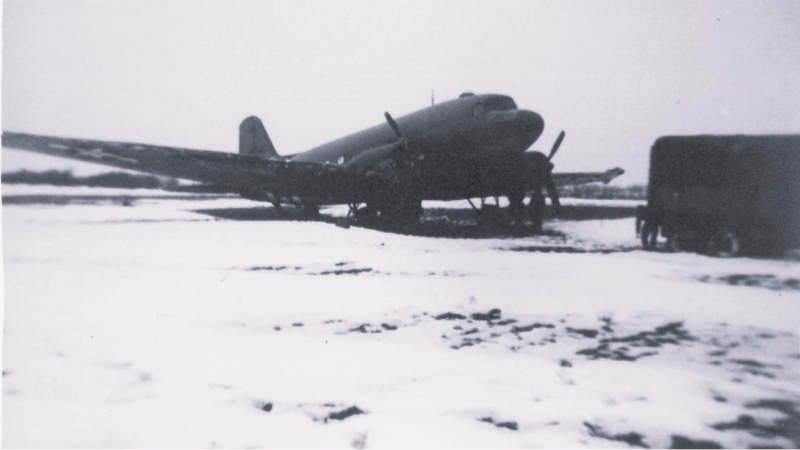
C-47 42-23342 of the 314th Troop Carrier Group at Harlaxton after its crash-landing in January 1945. (via Col Mark Vlahos)
On 29 January 1945, 2nd Lt Wallace R Johnson was piloting C-47, tail number 42-23342, of the 32nd Troop Carrier Squadron (TCS), 314th Troop Carrier Group (TCG), when it made an emergency landing at RAF Harlaxton.
The aircraft had just taken off from its home base at nearby RAF Saltby on a local night formation training flight. With weather conditions deteriorating rapidly, Johnson decided to abort the training flight and return to Saltby.
Some two miles north-east of RAF Saltby lay RAF Harlaxton, a small grass training airfield. In the poor weather conditions, Johnson mistook this airfield for Saltby and attempted a landing but the aircraft collided with two small buildings.
Thankfully, all crew members walked off the aircraft with no injuries. However, the aircraft was so severely damaged that it never flew again, and was used instead as a supply of spare parts for other aircraft.
When Johnson returned to RAF Saltby, he filed the following report:
I was flying aircraft #42-23342 on a scheduled night formation flight and ran into a snowstorm as soon as I got off the ground. At 3,000 feet, I circled the perimeter track at Saltby twice, waiting for other planes in the formation to land. Then I made two passes at the field, following the cone [radio beacon] in, but could not see the runway lights. The second time I made a short pattern and came back on the cone again. This time I picked up the perimeter tracks at Harlaxton instead of our own. At the time I heard Saltby tower say they were going to send a flare up for [aircraft call-sign] 'I - Item', which was lost. Harlaxton also sent a flare up at this time, so I hit the cone and followed it in. I saw runway lights at Harlaxton, and I lined up on them. As I was coming in, I saw another airplane approaching head on and just a few feet above me. I would have gone around the pattern again had it not been for this, and the traffic controller told me later that he would have given me a 'red' light, but he was afraid I did not see the approaching plane and might crash into it if I pulled up to go around again.
I set the ship down on the edge of the runway about a quarter of the way down its length, thinking it was the long runway at Saltby. Actually, it was a 1,000-yard-long runway. [note: the long runway at Saltby was 6,000 feet long.] I saw two small buildings in my path and attempted to ground loop the airplane but could not get the brakes to hold on the grass runway. There was not sufficient clearance for the aircraft between the buildings. When we hit, I cut the switches and gas.
Both wings were damaged beyond repair. The right engine cowl was smashed and the right engine damaged as well. A small hole was torn in the lower part of the aircraft nose. No members of the crew were injured.
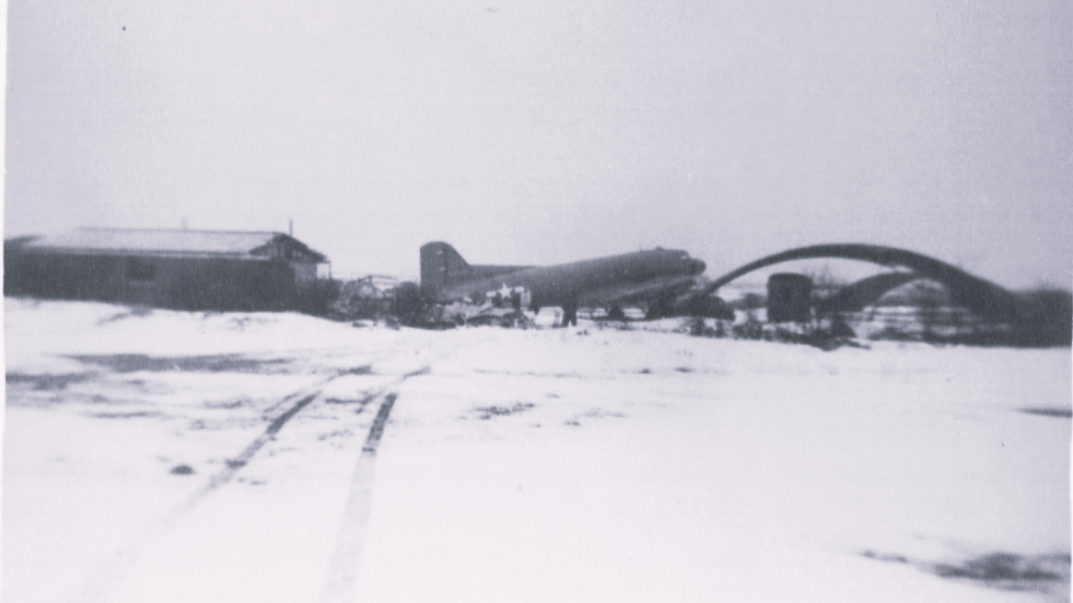
Long-distance photo of C-47 42-23342 at Harlaxton. (Photo courtesy of Mr David Milus Wilson, son of World War II 32nd TCS Commander Lt Col Halac G Wilson, via Col Mark Vlahos)
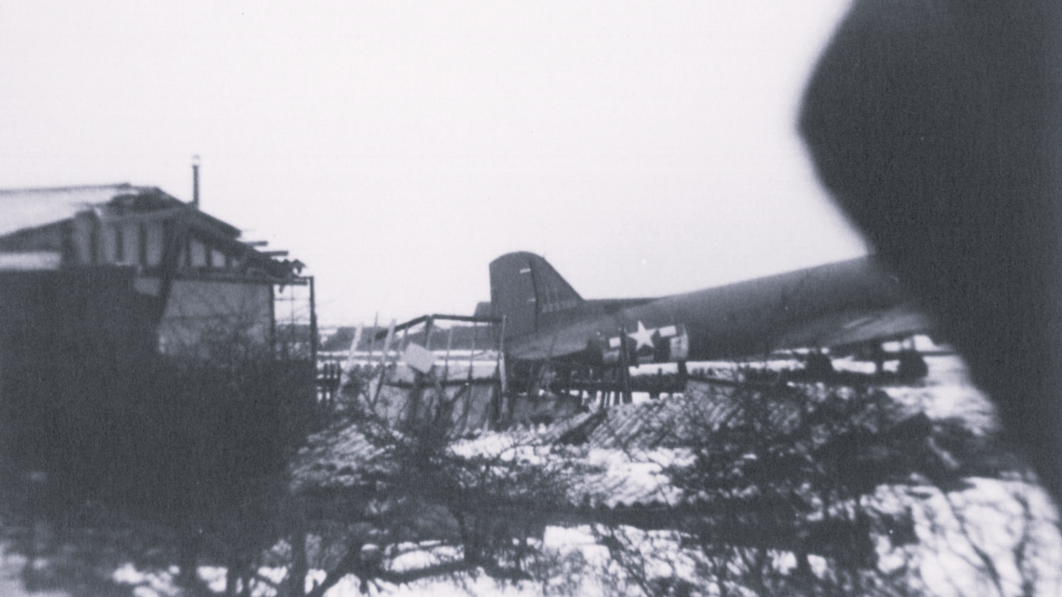
Photo showing a building on the left struck by the C-47 when it failed to stop after landing. (Photo courtesy of Mr David Milus Wilson, son of World War II 32nd TCS Commander Lt Col Halac G Wilson, via Col Mark Vlahos)
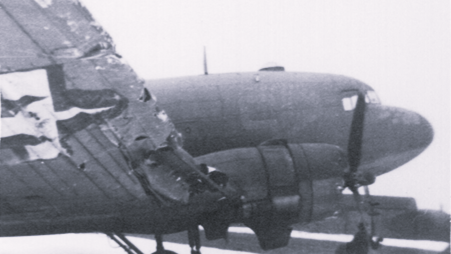
Close-up of damage to the wing of C-47 42-23342. (Photo courtesy of Mr David Milus Wilson, son of World War II 32nd TCS Commander Lt Col Halac G Wilson, via Col Mark Vlahos)
While from a distance the aircraft seemed intact, upon closer inspection both wings, the right engine and front fuselage were severely damaged. The entire leading edge of both wings were punctured, ripped, and bent in hundreds of places. Sadly, the aircraft never flew again.
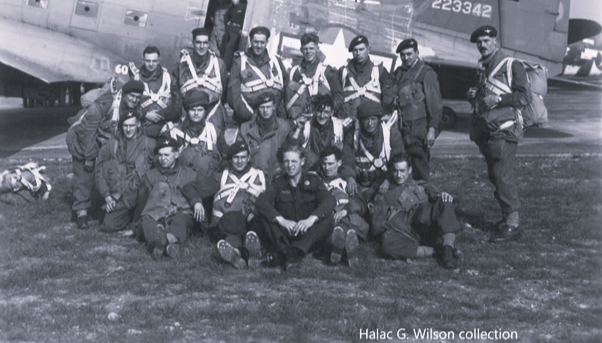
C-47 42-23342 at Saltby on 18 September 1944, with men of the British 156th Parachute Battalion, who were about to fly to Arnhem. (Photo courtesy of Mr David Milus Wilson, son of World War II 32nd TCS Commander Lt Col Halac G Wilson, via Col Mark Vlahos)
Ironically, on 17 and 18 September 1944, this same aircraft carried paratroopers of the British 1st Airborne Division to Arnhem during Operation MARKET GARDEN. Alongside is a rare photograph of it on 18 September 1944 with men of the British 156th Parachute Battalion, just before it flew them to Arnhem. Of historical significance is that both British Lieutenant Colonel John Frost and Polish Major General Stanislaw Sosabowski flew from RAF Saltby to jump at Arnhem during this operation.
Coincidentally, Harlaxton Manor served as the temporary base for a few units of the British 1st Airborne Division, which resided and trained at the Manor.
Today, Harlaxton Manor is the European Study Center of the University of Evansville, Indiana, and provides a unique opportunity for US students to study abroad.
ACKNOWLEDGEMENT
